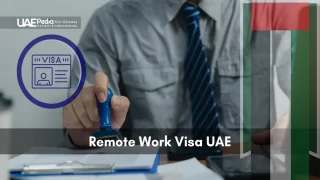The UAE Immigration Quota System is complex. It shapes the nation’s workforce. It impacts businesses, expats, and the local job market.
What challenges and opportunities does it present for companies in the UAE? The quota system is key to managing the labor market. It affects over 8 million foreign workers, about 88% of the population.
Navigating the UAE visa quota categories is crucial for business success.
Comprehensive Guide to the UAE Immigration Quota System

The UAE immigration quota system is key to its workforce. It sets limits and rules for different jobs and skills. Let’s look at how it works and its impact on businesses.
Key Components of the Immigration Quota
The system aims to balance the workforce and help Emiratis. Companies with 50+ employees must hire 2% Emiratis each year. This goal will grow to 6% by 2024 and 10% by 2026.
Quota Allocation Process for Companies
The rules for skilled workers change based on company size and type. Companies that hire more Emiratis pay less for work permits. There’s also a scheme to help with salaries for Emirati employees.
Role of Free Zones in Quota Distribution
Free zones in the UAE have their own rules. They might let companies hire more expats, which is good for international businesses. But, the rules can differ, so companies need to check.
Impact on Business Operations
The quota system affects businesses a lot. Companies that follow the rules might get help or better government contracts. But, not following the rules can cost AED 6,000 each month for each empty job.
| Aspect | Requirement/Benefit |
|---|---|
| Minimum Emiratization | 2% annually for companies with 50+ employees |
| Emiratization Target (2026) | 10% for companies with 50+ employees |
| Work Permit Fee (Category 1) | Max AED 250 for 2 years |
| Child Allowance | AED 600 per child (up to 4) for 5 years |
| Non-compliance Fine | AED 6,000 per month per unfilled quota position |
The UAE’s quota system helps develop skills and knowledge. It also gives Emiratis chances in the private sector. It helps companies invest in local talent while keeping the workforce diverse.
Implementation and Application Process
Applying under UAE immigration quota has many steps. The UAE has made the process easier for employers and employees. Let’s look at the main steps in the UAE immigration system.
Entry Permit and Visa Requirements
To get a UAE work visa, you need two applications. One is for the entry permit and the other for the residency permit. Most people choose the standard work visa, which lasts two years.
You must be between 18 and 60 years old. You also need certain academic qualifications.
Documentation and Submission Guidelines
For a visa in the UAE, you need to provide many documents. These include passports, academic certificates, and financial guarantor documents. It can take up to two months for legalization.
Employers with five or more employees must apply online through the eDNRD platform.
Medical Testing and Emirates ID Registration
You must have a medical exam from a Dubai Health Authority hospital. The Emirates ID card is needed for two years and costs 180 AED. You can get it quickly if needed.
This card helps with digital transactions in the UAE.
Compliance with Labor Laws
Employers must give a detailed labor contract to TAS-HEEL within 14 days after the medical exam. They also need to provide health insurance for employees and their families. The rules for this vary by emirate.
Cost Structure and Processing Fees
Applying under UAE immigration quota has different costs. Filing for residency can cost up to 750 AED. The time to get entry visas and work permits is usually 2-4 months.
Companies can pay for immigration fees at typing centers. They can get e-Visas in hours. But, approval times can change based on your nationality and security checks.
| Service | Cost (AED) | Processing Time |
|---|---|---|
| Emirates ID Application | 180 | Standard |
| Emirates ID Urgent Service | 330 | Expedited |
| Residency Filing Fee | Up to 750 | Varies |
| Entry Visa and Work Permit | Varies | 2-4 months |
Conclusion
The UAE Immigration Quota System is very important. It helps shape the country’s workforce. The UAE has a lot of migrants, and the system tries to balance them with local jobs.
The UAE Government keeps improving its rules for workers. This helps the country meet its economic needs and keep up with global trends.
Expatriate visas in the UAE are tied to the Kafala system. This system has changed a lot in recent years. The goal is to protect workers better while keeping the UAE attractive for skilled workers.
The number of foreign workers in the UAE has grown a lot. It went up seven times from 1975 to 2008.
As the UAE’s immigration rules change, businesses need to keep up. They must know about work quotas, visa rules, and labor laws. The UAE wants to grow its economy while also improving its workforce.
For companies and people, it’s important to understand these rules. This helps them do well in the UAE’s fast-changing business world.



















